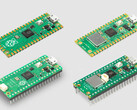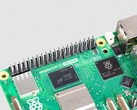Espressif has delivered dual-band Wi-Fi with the ESP32-C5, a long-awaited addition to its popular ESP32 series of microcontrollers. Unlike previous models, the C5 finally supports both 2.4 GHz and 5 GHz Wi-Fi, making it a significant step forward for IoT and embedded applications that require more flexibility in wireless connectivity.
Key features
The ESP32-C5 is built around a single-core 32-bit RISC-V processor, clocked at up to 240 MHz, with 384 KB of on-chip SRAM and 320 KB of ROM. It also supports external PSRAM.
One of its most notable and anticipated features is dual-band Wi-Fi 6, which should help improve networking performance, especially in congested environments. Espressif claims "outstanding RF performance," which should make the product competitive in both consumer and industrial applications. In addition to Wi-Fi, the ESP32-C5 includes Bluetooth 5 (LE) and IEEE 802.15.4, enabling Zigbee 3.0 and Thread 1.3 support for smart home and IoT uses.
The chip comes with 29 programmable GPIOs, useful for developers integrating sensors, actuators, and other peripherals. Security remains a focus as well, with Espressif’s flash encryption technology ensuring data protection.
What this means for developers
Until now, all Wi-Fi-enabled ESP32 chips were limited to 2.4 GHz networks, which can suffer from interference in crowded areas or lack of support with newer hardware. At the moment, support for the ESP32-C5 is still being integrated into development platforms like Arduino, but initial tests confirm it can detect and connect to both 2.4 GHz and 5 GHz networks. This marks a major evolution for Espressif’s lineup, and we can expect to see the ESP32-C5 appearing in more projects as software support matures.

















